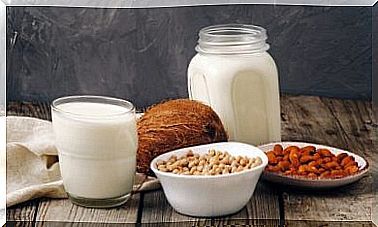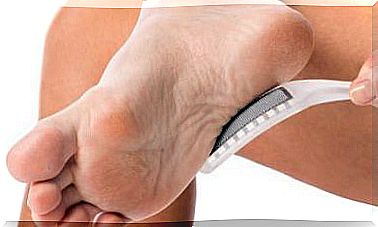Physiology Of The Large Intestine
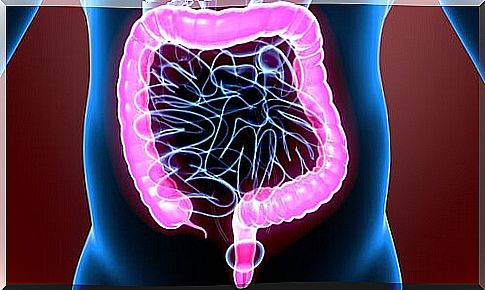
In reviewing what constitutes the physiology of the large intestine, it is necessary to remember that we are referring specifically to the final section of the digestive tract, which is composed of the following: cecum, colon, rectum, and anal canal. In short, they make up the widest and shortest part of the digestive tract.
The large intestine has the function of absorbing water and electrolytes, responsibility of the more proximal half and, on the other hand, the storage of fecal matter until its expulsion, a function of the distal half.
These functions do not require as intense peristaltic movements performed by the colon as in previous sections. In fact, these are slow and smooth (“lazy”). Even so, colon movements have characteristics similar to small bowel movements.
Peristalsis
This term is used to designate the set of movements of contraction of the digestive tract, in order to achieve the displacement of fecal matter to the anus. In other words, they are bowel movements of propulsion.
Physiology of the Large Intestine: Colon Movements
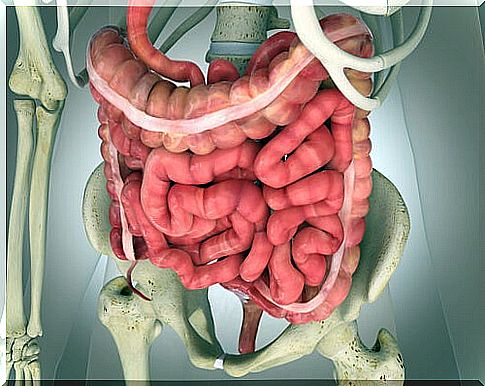
As in the small intestine, colon movements can be divided into mixing movements and propulsion movements.
- Mixing movements are explained by the combined contraction of the circular muscle and the longitudinal muscle of the colon. This causes the unstimulated portion of the colon to protrude outward as a sac called a “haustra”.
Later, the process is repeated at a nearby point, so that the fecal matter advances as if to “organize” the large intestine. In this way, all fecal matter is exposed to the intestinal wall, thus facilitating hydroelectrolytic absorption.
- Propulsion movements depend on “mass movements ”. It is a modified type of peristalsis that causes a segment of the colon to act as a unit, pushing fecal matter forward. These movements occur 3 times a day, lasting approximately 30 minutes each time.
How do these movements start?
Mass movements occur in response to distension of the stomach and duodenum (gastrocolic and duodenocolic reflex). At other times they occur in response to irritation, such as in patients with ulcerative colitis.
Role of the ileocecal valve
The ileocecal valve prevents the chyme from returning to the ileum when it reaches the colon. This is because both the degree of contraction of the ileocecal sphincter and the peristalsis of the ileum are subject to reflexes from the cecum.
When the cecal wall is distended, signals are emitted that increase sphincter contraction and inhibit intestinal peristalsis.
What happens if these processes are changed?
In general:
- An excess of intestinal motility results in decreased absorption of substances and the appearance of diarrhea or loose stools.
- A defect in intestinal motility will lead to increased absorption of substances and the appearance of hard stools, responsible for constipation.
Physiology of the large intestine: defecation reflexes
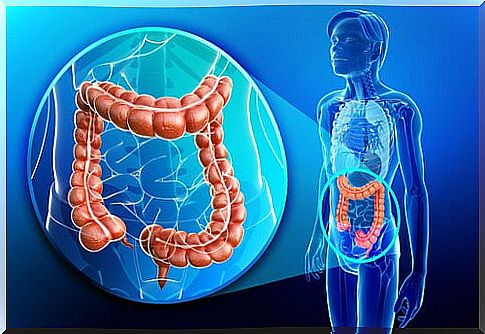
The expulsion of feces is due to defecation reflexes:
- The intrinsic reflex, transmitted by the enteric nervous system of the rectum (itself is very weak).
- The parasympathetic reflex, transmitted by pelvic nerve fibers and acting as a reinforcement.
How does this happen?
The arrival of feces in the rectum causes distension of its wall, which sends afferent signals through the myenteric plexus.
In response to this, peristaltic waves are initiated from the descending colon to the rectum and carry fecal matter to the anus.
The arrival of feces in the rectum causes its wall to distend, which sends afferent signals through the myenteric plexus.
The myenteric plexus emits inhibitory signals that relax the internal anal sphincter, so that when the peristaltic wave reaches the anus, the stool continues to advance.
Relaxing the external anal sphincter is done consciously.
On the other hand, by stimulating the nerve fibers in the anus, afferent signals are emitted in the spinal cord.
These return via the parasympathetic nerve fibers to the pelvic nerves, increasing peristalsis and helping to relax the internal anal sphincter.
Physiology of the large intestine: secretion of substances
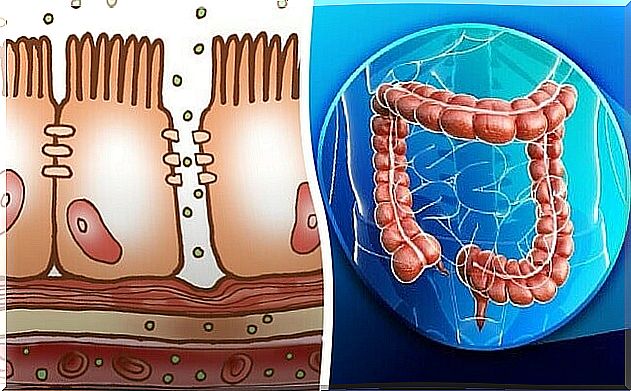
What substances are secreted?
In the large intestine, only mucus containing moderate amounts of bicarbonate ions is secreted (pH > 8).
The secretion of this mucus is carried out by the mucous cells of the intestinal wall and the mucous cells found in Lieberkühn’s crypts (simple tubular glands of the small intestine).
Secretion of bicarbonate is carried out by epithelial cells other than mucous membranes and is responsible for the alkaline pH of mucus.
How is it produced?
Mucus secretion is primarily mediated by direct stimulation of mucous cells, although this increases in response to stimulation of the pelvic nerves (parasympathetic innervation).
What is the purpose?
This secreted mucus has three functions:
- Protects the intestinal wall from possible abrasions and faecal acids (the pH of mucus is >8 due to bicarbonate ions).
- Keeps fecal matter together.
- Protects the intestine from bacterial activity.
Physiology of the large intestine: substance absorption
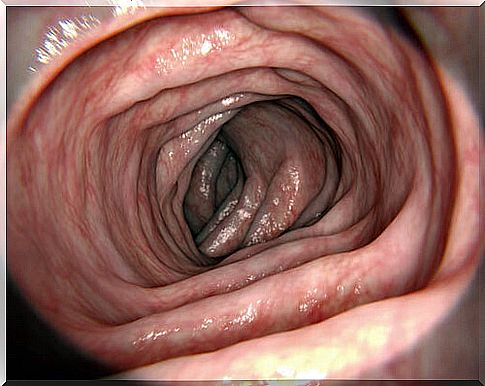
For the large intestine, approximately 1500 ml of chyme arrives every day.
Most of the water and electrolytes it contains are absorbed mainly in the proximal half of the colon, so excreted feces contain only about 100 ml of water and between 1 and 5 mEq of sodium and chlorine ions.
How are substances absorbed?
Sodium is absorbed by active transport through the Na-H exchanger. Thanks to a gradient of positive charges that originates, part of the chlorine ions are passively dragged into the cells.
The remaining chlorine ions are absorbed by exchanging with bicarbonate ions.
Potassium, along with other ions such as calcium or magnesium, are also absorbed from the intestine by active transport.
The junctions between the cells of the large intestine are much tighter than in other sections of the digestive tract, thus preventing the retrograde diffusion of ions and achieving a much more complete absorption of sodium.
Aldosterone greatly increases sodium absorption. The resulting concentration gradient allows water to be absorbed by osmosis.



